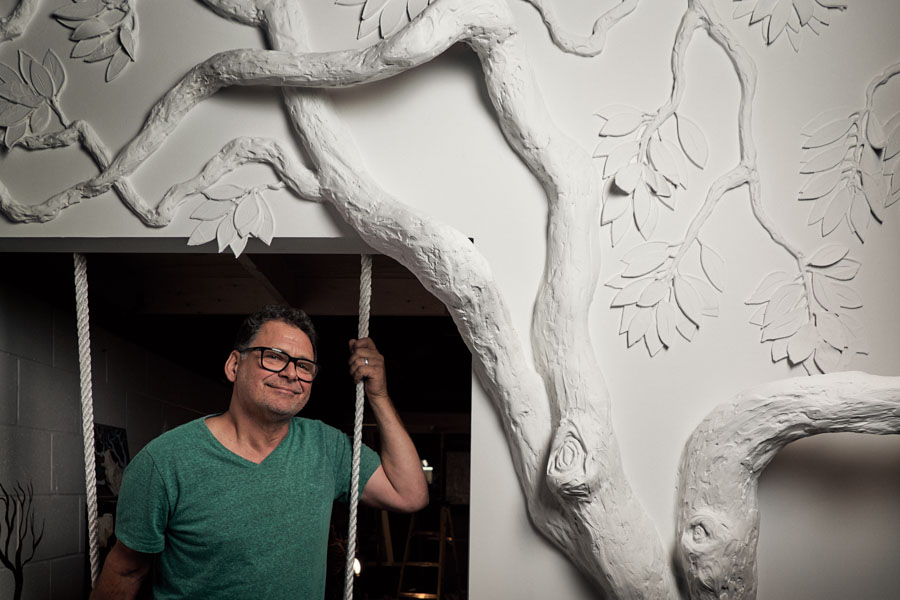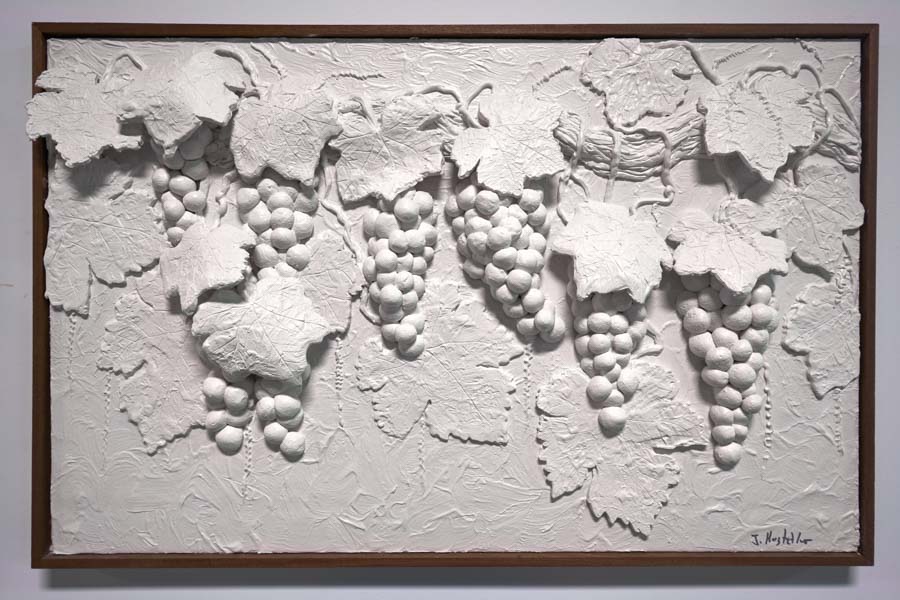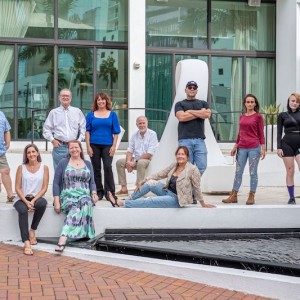Meeting Jeff Hostetler in his studio space at Art Factory 44 off Tallevast Road, one thing becomes instantly clear—there is nothing tortured about this artist. Effusive and light on his feet, he bounces around the studio as his laugh carries to the ceiling and echoes off the walls that bear his sculptural, arboreal art. In the throes of creation, Hostetler beams like a child with a new toy, because in many ways he is. A drywall contractor by trade, art came late—a chance discovery, nurtured in a dark supply closet before being unleashed—but right when he needed it most. “It’s like finding an extension or a separate room in this house that you’ve lived in all your life,” he says. “It’s a rebirth.” Originally born into the drywall business, an industry his father still calls home, Hostetler first learned to use plaster as a tool and a mask—something to patch holes and cover mistakes, a formless blank for restoring someone else’s vision. Unsurprisingly, the experience left him unsatisfied. He found a job in the facilities department at Ringling College, perhaps subconsciously drawn to the creative atmosphere, and things started looking up. Then came the divorce. “You think your life is over,” Hostetler recalls. And, in a way, maybe his old life was. He enrolled in an art class at Ringling College.

PHOTO BY WYATT KOSTYGAN.
“I found out I can draw,” Hostetler says, and his eyes still gleam like a Goonie finding buried treasure. “The energy and artistic spirit consumed me and I couldn’t stop.” Specifically, he couldn’t stop drawing trees, their sprawling limbs stretching across his page, seeking and searching. “The trees represent our own lives,” he says. “Struggles, divorce and death, yet you still grow.” And Hostetler had some growing to do yet. “Drywall’s not a medium,” he remembers saying to his Ringling coworkers when they suggested he try his hand with the material he knew so well. They shrugged and showed him a video of a man sculpting underwater scenes from drywall mud. “Everything is a medium,” Hostetler says now, and if that guy on YouTube can make fish, then he can make trees. He cleared out space in a supply closet on the third floor of a Ringling dormitory and began sculpting on the walls in secret. He eventually left that job, but one of his trees remains.
Today, Hostetler steadily plants his plaster forest around town. He still works mostly by hand, scooping great chunks of mud and sculpting slender trunks and smooth flowing limbs that fan bone-white across whatever his canvas may be at the moment, whether for a minor installation on the wall at Main Street’s Element, a series of vines and grape clusters for a Kansas City winery or a great 20-foot construction greeting guests at Alinari condominiums off North Tamiami Trail. And as development continues to spread its own concrete roots through the Florida landscape, perhaps, hopes Hostetler, his work can remind folks of what they’re losing. “I can’t control the development,” he says, “but I can bring trees inside.”










